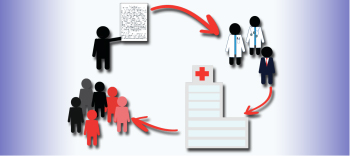
What is a clinical trial?
 Researchers use clinical trials to test a new medicine for the first time or to repurpose an older drug for another disease. Researchers also use clinical trials to evaluate new medical devices.
Researchers use clinical trials to test a new medicine for the first time or to repurpose an older drug for another disease. Researchers also use clinical trials to evaluate new medical devices.
So where do these drugs come from? Sometimes researchers discover drugs deemed to have human therapeutic properties in nature from plants and animals. At other times, scientists create a drug that targets a molecular site to perform an action at the microscopic level.
Irrespective of where the drug came from, all drugs must follow a common pathway in the clinical trial process. Clinical trials contain several phases. Once all phases have been completed, the Federal Drug Administration (FDA) reviews the clinical trial data and either approves the drug for sale in the United States or recommends further testing.
How clinical trials work
At this point, and usually after several years of work, testing on humans is ready to begin. The FDA has a strict procedure in place to maximize the safety of patients throughout the entire process by quickly catching and limiting any potential side effects that may arise during the course of treatment. The clinical phase one stage is typically restricted to those whose condition has not been helped with standard medication. There are only a handful of people participating at this stage. The second phase is similar in scope to the first but with a slightly larger number of individuals. There are fewer restrictions during this phase. In the third phase, the findings from a still larger group provide the final word on whether a drug will pass the FDA approval committee. This phase opens up the door to most individuals with the specified condition. Occasionally, drugs that have already been approved for a previous condition will undergo further review for another condition in a separate clinical trial.
The potential side effects must be given great consideration when deciding to enter a clinical trial. One can reasonably expect that if a medication was previously approved, then it is a safe medication. However, sometimes a medication with a severe side effect profile is approved because the alternative of not medicating the patient is considered more hazardous to the patient. Side effects are most often temporary and are reversed with the discontinuation of medications, but occasionally more severe side effects can occur.
Trials are mostly random, double blind, and placebo controlled. This means that some of the patients are given the trial medication, while others are given a sugar pill that appears similar to the real drug. Neither the physician nor the patient is aware of which particular pill is given. Having a trial set up in this scientific fashion is the most rigorous attempt to eliminate extraneous elements from affecting the results. For instance, if the patient was taking a placebo but was told it was the experimental drug, he/she may behave in a manner that was in accordance with the drug’s intended effect. This “placebo effect” could alter the outcome of the trial, leaving researchers with false results.
While patients and families understandably want to receive the experimental drug, without this rigid design it is impossible to understand if the drug is having its intended effect. It is also perfectly reasonable not to want to partake in these trials, as the medications are still under review and without full scientific consensus from the medical community.
How to participate in a clinical trial

